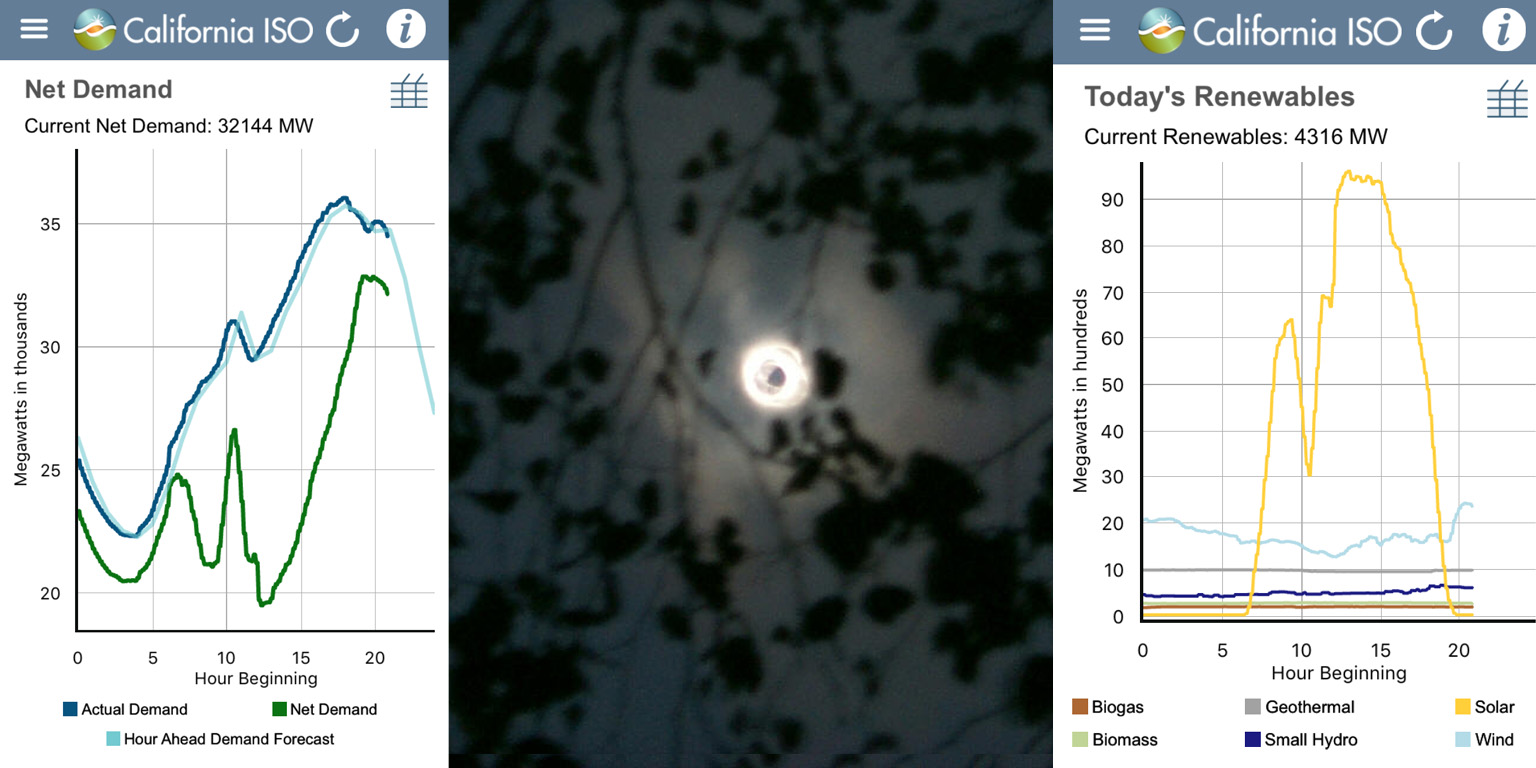Impact of Solar Eclipse on Solar Energy in California

I've seen a lot of great photos and videos of the recent solar eclipse shared online and wanted to discuss a slightly different angle on the event. If you read my posts you'll know I have a strong interest in sustainability and climate change. Numerous articles came out before the eclipse highlighting the fact that California (and other states that get a large percentage of their power from solar) would experience a sharp drop in solar production during the eclipse and questioning whether that would impact grid reliability and lead to blackouts.
You can see in the images below (captured from the California ISO app on my phone) that the eclipse did cause a large and steep decline in solar energy production followed by a similar large and steep rise as the eclipse ended. This lead to an even funkier Net Demand curve (see the second image) which shows demand minus renewable production. Luckily, grid operators had months to plan and prepare for this, so the missing solar energy was covered with generation from natural gas and large hydro (not classified renewable in CA, though small hydro is).
In short, the eclipse did complicate energy production in California, a state with high solar power production during the daytime, but did not overly stress the grid or lead to blackouts. As states add more storage (via batteries, pumped-hydro, etc) the risk posed by such events will be minimized even more. California already has some grid-scale battery storage and will be adding much more in the near future.
*The eclipse photo used in the main image is one I took during an eclipse in Romania in 1999. I'm excited the US will have another solar eclipse in 2024 and it will go over my home state of Arkansas!
reSteemed
Well thats conclusive proof of the lack of reliability of solar right there, every few hundred years you are going to get a few minutes of reduced capacity, better start burning coal immediately!
Hehe, that is exactly the argument some people were making.
Sometimes I like to imagine a world where we did live off of solar and wind only, where you had to quickly think if there was enough energy right now to do what you wanted.
Apart from heating requirements, it really would not be that bad, very few things that we have in our modern life need to be available 24/7/365.
I agree! When we do get close to all solar, wind, and battery storage; it may come close to that with deciding what you want to use when energy is super cheap (maybe 10:00 - 14:00) and what you want to do when it is much more expensive (maybe 17:00 - 5:00). IoT and programmable appliances will make it pretty easy to schedule the dishwasher, clothes dryer, etc. The demand-response company, OhmConnect, that I think I've posted on, already has the ability to automatically adjust (for users who have opted in) smart thermostats and other devices (like car chargers) when demand is high.
Right the tech exists but there is no infrastructure to bind it together.
On electricchain.org we have built solar datalogger that put generation data into the solarcoin blockchain, so we can get real time generation data from all sizes of solar installs.
That's interesting, not something that I would have even thought about! Thanks for sharing :)
Nice ! Have a look to my page, i'm astrophotographer:
https://steemit.com/photography/@clodoweg/sombrero-galaxy-m104